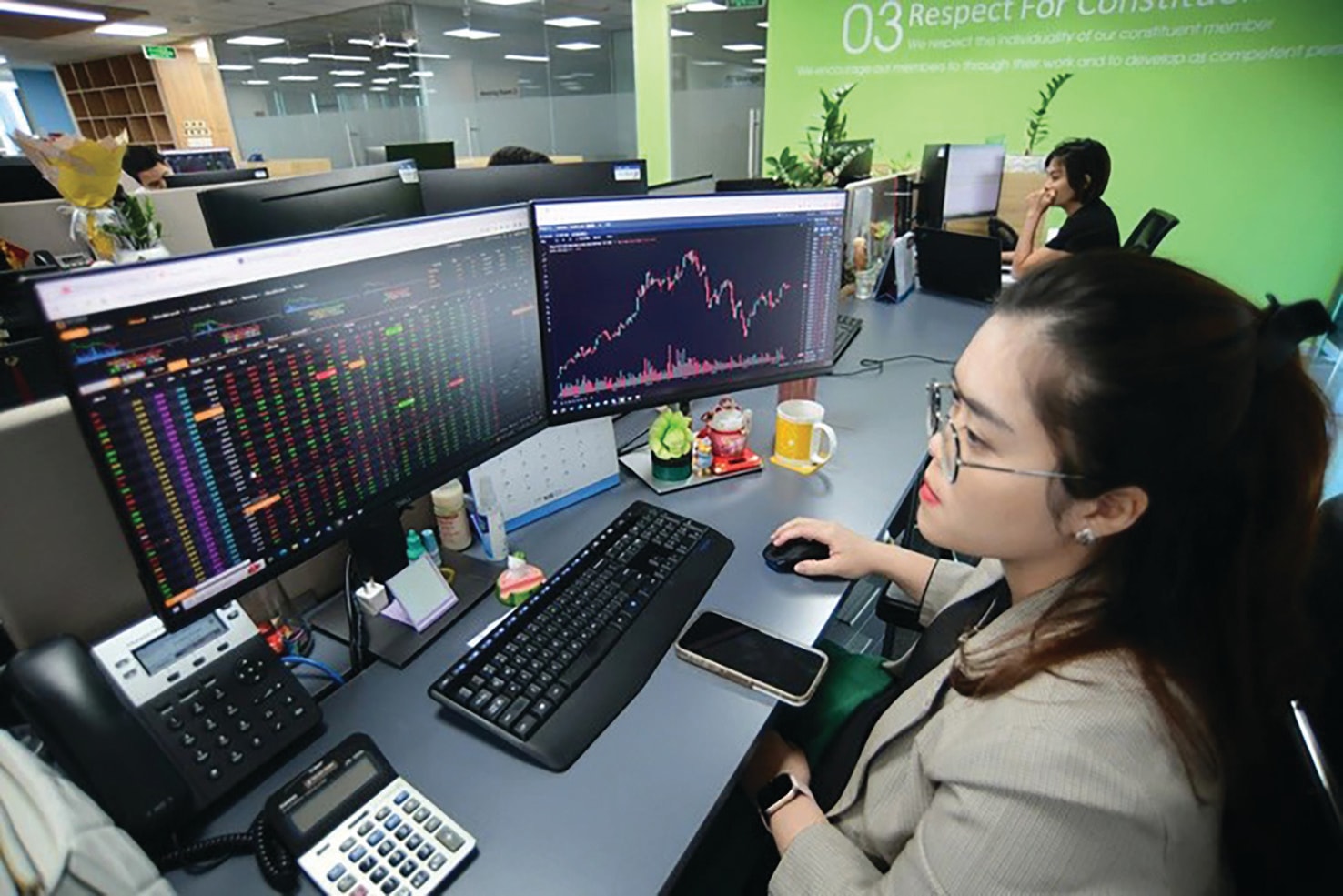Which stocks will attract cash flows in 2025?
Experts advise investors to be optimistic, balance cash-equity allocation, and use margin leverage when needed as the market closes out the year and enters 2025.

Market liquidity was robust in the first half of the year but declined in the second half due to exchange rate pressures
Contrary to the expectations of many investors and some experts, as of the second-to-last trading session of the year, the VN-Index remained resilient around the 1,270-point mark. According to Mr. Trần Hoàng Sơn, Market Strategy Director at VPBank Securities (VPBankS), 2024 was a fairly successful year for the market.
VN-Index Among Top Performers
"2024 was a successful year for the VN-Index. Compared to other countries worldwide and in the region, the VN-Index grew approximately 13%, placing it among the top-performing markets of 2024. Although not as high as the U.S. or Japanese stock markets, it outpaced many Asian nations like India, Malaysia, the Philippines, Indonesia, and South Korea. This demonstrates that Vietnam is becoming a relatively attractive investment destination within the region," he remarked.
Vietnam has a compelling narrative of political stability, economic expansion, and notable accomplishments in 2024. On the other hand, political unrest in South Korea has resulted in a 10% decline in the country's stock market so far this year, along with a sharp decline in exchange rates. Vietnam has not fallen behind more developed countries in spite of global problems.
With an almost 13% increase, Vietnam's stock market also saw growth for the second year in a row. Mr. Sơn pointed out that since the market bottomed out in 2022, business profits have recovered and increased significantly over the last two years.
The expert emphasized the importance of corporate earnings as an indicator. When earnings bottom out and recover, the stock market typically follows suit with corresponding growth.
Foreign capital flows and market resilience
In 2024, there was a significant outflow of capital, amounting to approximately $3 billion, from Vietnam to more developed markets like the U.S. and Europe. However, the VN-Index demonstrated resilience, a testament to its strength and the role of domestic investors in stabilizing the market.
When foreign investors were net sellers, domestic funds and individual investors stepped in to stabilize the market, helping the VN-Index approach the 1,300-point level. While other countries experienced capital outflows and market downturns, Vietnam maintained its footing with attractive valuations and strong earnings growth.
Liquidity and Exchange Rate Impacts
In 2024, the Vietnamese stock market's average daily liquidity topped VND 21 trillion, which is a noteworthy amount. The first half of the year saw a surge in liquidity, with some sessions hitting VND 24–25 trillion.
However, exchange rate swings and net selling by foreign investors were the main causes of the liquidity drop that started in mid-July. The market reached its lowest points in mid-to-late November, when the reductions were most noticeable. Liquidity had returned to normal before the end of the year.
"My forecast for the next 3–6 months is that liquidity will remain flat and lack a clear direction. However, from Q2 onwards, liquidity is expected to rise significantly. While 2024 saw high liquidity early in the year and declines later, 2025 is likely to be the opposite: low liquidity at the start, rising sharply towards the end," Mr. Sơn predicted.
The prospect of Vietnam’s stock market upgrade is clear. In other countries, foreign investors typically start buying about three months before an upgrade. Thus, Vietnam’s liquidity is expected to increase significantly by September 2025, ahead of FTSE Russell's decision, and into early 2026.
At present, global stock markets face uncertainties. For instance, on January 20, 2025, Donald Trump will assume the U.S. presidency, with threats of tariff increases causing global investors to remain cautious. Additionally, the short-term rise of the U.S. dollar is limiting capital inflows into the market. Therefore, the Vietnamese market is expected to move sideways and consolidate amid global volatility.
Leading Sectors in 2024
The best-performing sector in 2024 was technology and telecommunications, led by Viettel-related stocks, which surged by an average of 222.56%—a remarkable performance that surprised many investors.
The IT sector, benefiting from the global AI trend, also saw strong growth, with companies like FPT and CMG gaining 81% year-to-date.
The aviation sector, including airlines and related services, rebounded by 67%, marking a clear recovery after the pandemic.
Natural rubber stocks gained 45%, while the retail sector rose nearly 40% as the economy and consumer spending recovered.
Conversely, sectors like real estate (-3.75%), resources (-14.6%), and Vingroup stocks (-10.3%) underperformed due to ongoing challenges. Banking stocks rose 24%, and securities stocks gained 10%, both outperforming the VN-Index.
Preparing for 2025
Mr. Sơn's opinion on attractive industries is in line with VPBankS's most recent evaluations, which indicate that equities in banking and securities have substantial room to develop in 2025. Because of their lofty values, overheated sectors—like those that increased by more than 100% this year—may not have as much upward momentum in the upcoming year.
However, it is anticipated that securities equities and banking will be the main attractions. Securities profits are expected to increase by 15% in 2025, attracting investor interest, while banking profits are expected to climb by 17.7%. Oil and gas stocks and industrial real estate are also expected to rise.
"In 2025, the first thing we should bring into the new year is optimism. Entering the year with a positive mindset allows investors to seize opportunities and navigate challenges in the first half.
From a portfolio perspective, investors might consider maintaining a cash-equity balance of 50% or less in the first half. Following potential deep corrections, increasing equity allocations after June could be advantageous as the market turns positive," Mr. Sơn concluded.








